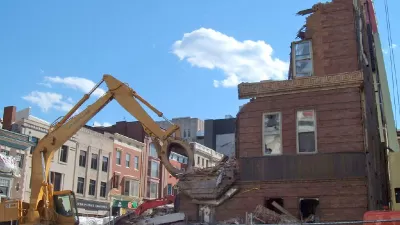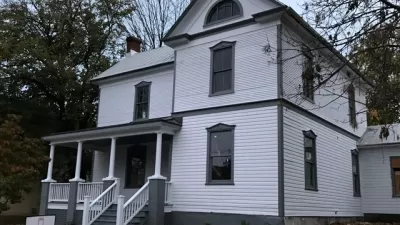In a rebuttal to criticisms leveled at historic preservation districts, Stephanie Meeks of the National Trust for Historic Preservation argues that historic preservation has value and can aid in creating affordable housing.

Writing in CityLab, Stephanie Meeks asks that critics who claim that historic preservation districts are contributing to a lack of affordable housing in our cities take a step back and find "ways to increase density and affordability in cities that don’t involve destroying the historic fabric of our communities."
Meeks writes that the benefits from our historic neighborhoods are both tangible and intangible. They connect residents to their neighborhoods and to those who came before, creating what Meeks describes as "living history lessons." In addition, many of our older neighborhoods hold opportunities for the adaptive reuse of the existing building stock to create multi-family units. Creating density in older neighborhoods doesn’t always require tearing down existing buildings to build taller.
Economists such as Edward Glaeser have argued that historic districts prevent affordability by limiting tall and dense new development that could fit everyone. But, as the urban planner Jeff Speck points out in Walkable City, 'economists don’t seem to have fully processed one thing the designers know, which is how tremendously dense a city can become at moderate heights.'
FULL STORY: Why Historic Preservation Districts Are Crucial to Cities

Planetizen Federal Action Tracker
A weekly monitor of how Trump’s orders and actions are impacting planners and planning in America.

San Francisco's School District Spent $105M To Build Affordable Housing for Teachers — And That's Just the Beginning
SFUSD joins a growing list of school districts using their land holdings to address housing affordability challenges faced by their own employees.

Can We Please Give Communities the Design They Deserve?
Often an afterthought, graphic design impacts everything from how we navigate a city to how we feel about it. One designer argues: the people deserve better.

The EV “Charging Divide” Plaguing Rural America
With “the deck stacked” against rural areas, will the great electric American road trip ever be a reality?

Judge Halts Brooklyn Bike Lane Removal
Lawyers must prove the city was not acting “arbitrarily, capriciously, and illegally” in ordering the hasty removal.

Engineers Gave America's Roads an Almost Failing Grade — Why Aren't We Fixing Them?
With over a trillion dollars spent on roads that are still falling apart, advocates propose a new “fix it first” framework.
Urban Design for Planners 1: Software Tools
This six-course series explores essential urban design concepts using open source software and equips planners with the tools they need to participate fully in the urban design process.
Planning for Universal Design
Learn the tools for implementing Universal Design in planning regulations.
Borough of Carlisle
Smith Gee Studio
City of Camden Redevelopment Agency
City of Astoria
Transportation Research & Education Center (TREC) at Portland State University
City of Camden Redevelopment Agency
Municipality of Princeton (NJ)





























